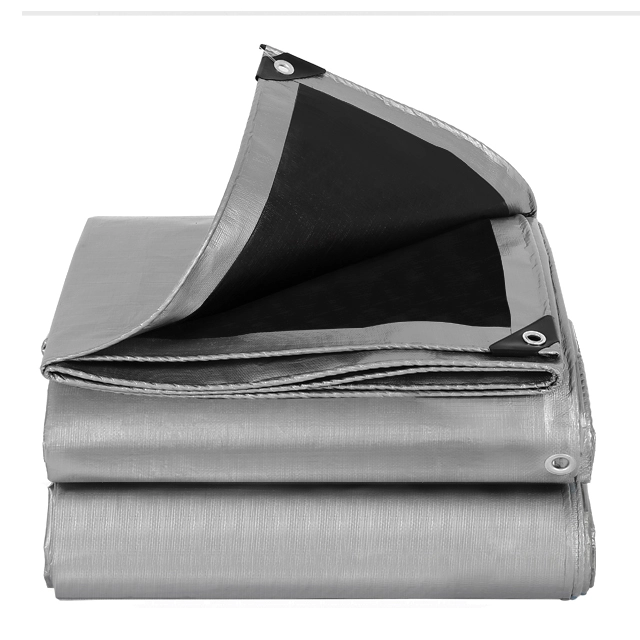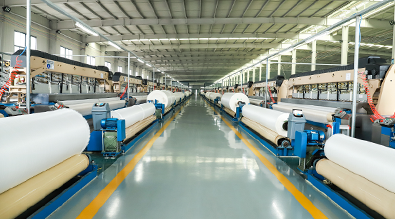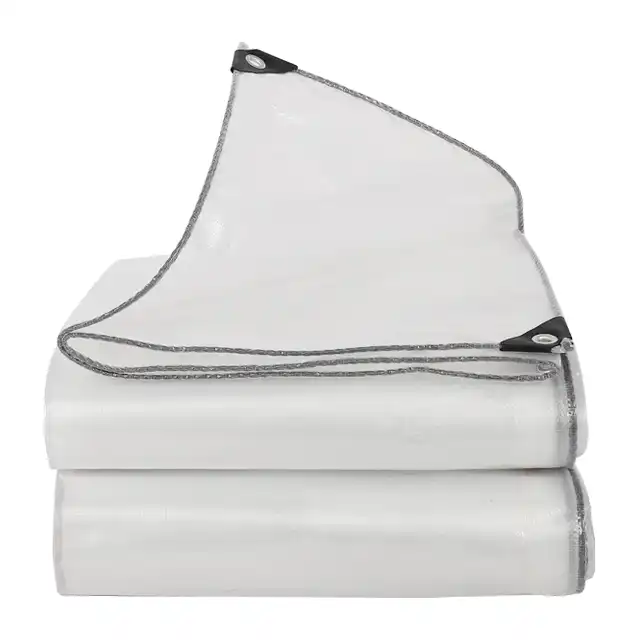Can You Use a Tarpaulin as a Tent or Shelter?
When faced with outdoor adventures, emergency situations, or budget-conscious camping needs, many wonder whether a simple tarpaulin can effectively serve as shelter. The answer is a resounding yes – a high-quality tarpaulin can indeed function as both a temporary tent and reliable shelter solution. Modern PE tarpaulins, particularly those manufactured with advanced materials and construction techniques, offer waterproof protection, UV resistance, and durability that make them excellent alternatives to traditional tents. Whether you're planning a camping trip, preparing for emergency situations, or need temporary outdoor coverage, understanding how to properly utilize a tarpaulin for shelter can be invaluable. With the right setup techniques and quality materials, a tarpaulin can provide effective protection from rain, wind, and sun while offering the flexibility and affordability that traditional tents often lack.
Essential Features That Make Tarpaulins Suitable for Shelter

Material Quality and Construction Standards
The effectiveness of a tarpaulin as shelter fundamentally depends on its material composition and manufacturing quality. High-grade PE (polyethylene) tarpaulins manufactured using advanced water-jet loom technology and professional coating processes offer superior performance compared to standard covers. Premium tarpaulin materials feature LDPE lamination on both sides, creating an impermeable barrier that ensures complete waterproofing while maintaining flexibility in various weather conditions. The mesh construction, typically ranging from 6×6 to 16×16, combined with denier ratings between 600D to 1800D, determines the fabric's strength and tear resistance. Quality manufacturers employ UV treatment processes that protect the tarpaulin from degradation caused by prolonged sun exposure, ensuring the material maintains its integrity over extended periods. Additionally, the GSM (grams per square meter) rating, ranging from 75 to 400gsm, indicates the material density and overall durability. Professional-grade tarpaulins undergo rigorous quality control measures, including ISO 9001:2015 certification standards, ensuring consistent performance in shelter applications. The anti-freezing and arctic flexibility features enable these materials to remain pliable and functional even in extreme cold conditions, making them suitable for year-round shelter use.
Waterproof and Weather Resistance Properties
A fundamental requirement for any effective shelter is complete weather protection, and modern tarpaulin technology delivers exceptional waterproof capabilities. The advanced coating processes applied to high-quality tarpaulins create a 100% waterproof barrier that effectively prevents moisture penetration while maintaining breathability to reduce condensation buildup. These waterproof properties result from sophisticated LDPE lamination techniques that seal the woven PE fabric structure, creating multiple layers of protection against precipitation. The tear-resistant construction ensures that minor punctures or stress points don't compromise the entire shelter's integrity during storms or high winds. UV treatment incorporated during manufacturing prevents the deterioration that typically affects outdoor materials exposed to sunlight, maintaining the tarpaulin's waterproof properties over extended periods. The shrink-proof characteristics ensure dimensional stability, preventing the material from contracting or expanding significantly with temperature changes, which could create gaps or stress points in shelter configurations. Anti-corrosion features protect metal grommets and reinforced edges from rust and degradation in humid conditions. Professional manufacturing processes ensure consistent coating thickness and coverage, eliminating weak points that could lead to leaks or failures during critical weather events.
Size Flexibility and Customization Options
One significant advantage of using tarpaulins for shelter construction is the extensive range of available sizes and customization possibilities. Professional manufacturers can produce tarpaulins ranging from compact personal shelters to large family-sized covers, with widths extending up to 40 meters without joints or seams. This seamless construction eliminates potential weak points and ensures uniform protection across the entire shelter area. The ability to specify exact dimensions according to specific requirements allows for precise shelter planning and optimal material utilization. Custom mesh configurations can be selected based on intended use, with finer meshes providing smoother surfaces for comfort while coarser meshes offering enhanced durability for harsh conditions. Color customization options, including the popular double blue configuration, provide both aesthetic appeal and practical benefits such as improved visibility or camouflage depending on the application. Advanced R&D capabilities enable the development of specialized features such as fire prevention properties and enhanced waterproof functions tailored to specific shelter requirements. The ultra-wide width braiding technology allows for the production of seamless large-area covers that eliminate the need for multiple panels and potential leak points. Professional manufacturing facilities with multiple coating machines and finishing lines ensure consistent quality across different sizes and specifications.
Effective Setup Techniques for Tarpaulin Shelters
Basic Lean-to and A-Frame Configurations
Creating effective shelter with a tarpaulin requires understanding fundamental setup configurations that maximize protection while maintaining structural stability. The lean-to configuration represents one of the most efficient and quick-to-establish shelter designs, requiring minimal equipment while providing excellent rain and wind protection. To construct a lean-to shelter, secure one edge of the tarpaulin to a horizontal support such as a fallen tree, fence, or rope stretched between two trees, then angle the material down to ground level, creating a sloped roof that naturally sheds water. The angle should be steep enough to encourage water runoff while providing adequate interior space. Properly securing the ground edge with stakes, rocks, or heavy objects prevents wind uplift and maintains the shelter's integrity. The A-frame configuration offers superior stability and weather protection by creating a triangular cross-section that effectively distributes wind loads and precipitation runoff. This setup involves stretching a ridge line between two anchor points, draping the tarpaulin over this line, and securing both edges to the ground, creating a traditional tent-like profile. The resulting structure provides excellent headroom and interior space while maintaining structural integrity in various weather conditions. Quality tarpaulins with reinforced grommets and edges are essential for these configurations, as stress points bear significant loads during setup and use.
Advanced Multi-Panel Shelter Systems
For larger groups or extended-duration shelter needs, advanced multi-panel tarpaulin systems offer expandable and highly customizable protection options. These configurations utilize multiple tarpaulin sheets in coordinated arrangements that create complex shelter systems with designated areas for sleeping, storage, and activities. The overlapping panel technique involves positioning multiple tarpaulins with generous overlap zones that are secured together using clips, rope, or specialized fasteners, creating continuous protection across large areas without compromising waterproof integrity. Professional-grade tarpaulins with consistent dimensions and matching grommet patterns facilitate seamless integration between panels. The modular approach allows for progressive shelter expansion as needs change or additional materials become available. Corner and edge reinforcements become particularly important in multi-panel systems, as connection points experience increased stress from wind loading and structural movement. The ultra-wide tarpaulins available from advanced manufacturers reduce the number of panels required for large shelters, minimizing potential leak points and simplifying construction. Proper ventilation planning becomes crucial in larger tarpaulin shelters to prevent condensation buildup and maintain comfortable interior conditions. Strategic placement of ventilation gaps and adjustable openings helps regulate airflow while maintaining weather protection.
Securing and Anchoring Methods
The long-term effectiveness of any tarpaulin shelter depends heavily on proper securing and anchoring techniques that account for various weather conditions and ground types. Professional installation requires understanding how different anchor types perform in various soil conditions, from sandy beach environments to rocky terrain. Traditional stake anchoring works well in soft ground conditions, but requires high-quality stakes driven at appropriate angles to resist both vertical pull and lateral forces. The guy-line system distributes loads across multiple anchor points, reducing stress on individual attachment points while improving overall stability. Proper guy-line tensioning creates the necessary tarp geometry while allowing for thermal expansion and contraction of materials. Rock and deadweight anchoring techniques prove invaluable in areas where ground penetration is difficult or impossible, utilizing natural materials to create effective anchor points. The anti-corrosion features of quality tarpaulin grommets and reinforcements ensure long-term reliability of attachment points, even in marine environments or high-humidity conditions. Understanding load distribution principles helps prevent tarp failure at stress concentration points, particularly important when dealing with irregular anchor point spacing or uneven terrain. Emergency anchoring techniques using available materials can be crucial in survival situations where traditional camping equipment is unavailable.
Practical Applications and Use Cases
Emergency and Survival Situations
In emergency and survival scenarios, a quality tarpaulin can literally be a life-saving shelter solution that provides immediate protection from the elements. Natural disasters such as hurricanes, earthquakes, or floods often leave people without conventional shelter options, making waterproof tarpaulins essential for temporary protection. The 100% waterproof construction of professional-grade tarpaulins ensures that displaced individuals and families can remain dry during extended periods of outdoor exposure. Emergency response organizations, including partnerships with UNHCR, IOM, ICRC, and UNICEF, rely on high-quality tarpaulins for rapid deployment in refugee camps and disaster relief operations worldwide. The lightweight nature of modern PE tarpaulins makes them easy to transport and distribute in emergency situations, while their durability ensures they can withstand harsh conditions for extended periods. The tear-resistant properties prevent catastrophic failure when the shelter experiences stress from wind or debris, maintaining protection when it's needed most. Multiple size options allow emergency planners to select appropriate tarpaulin dimensions for different family sizes and group configurations. The anti-freezing characteristics ensure functionality in cold-weather emergencies, while UV treatment protects against sun damage during extended outdoor deployment. Quick setup capabilities mean that emergency shelters can be established rapidly without requiring specialized tools or extensive training.
Recreational Camping and Outdoor Activities
For recreational camping and outdoor enthusiasts, tarpaulins offer versatile shelter solutions that complement or replace traditional camping equipment. Budget-conscious campers appreciate the significant cost savings compared to high-end tents, while still receiving reliable weather protection and durability. The Arctic flexibility of quality tarpaulins makes them suitable for year-round camping in various climates, from desert environments to mountain conditions. Ultralight backpackers benefit from the reduced weight compared to comparable tent systems, allowing for longer treks with less pack weight. The ability to create custom shelter configurations means campers can adapt their setup to specific site conditions, weather patterns, and group requirements. Beach camping applications particularly benefit from the waterproof and sand-resistant properties of quality tarpaulins, providing protection from both precipitation and wind-blown sand. The shrink-proof characteristics ensure that the shelter maintains its shape and tension even with temperature fluctuations common in outdoor environments. Multi-purpose functionality allows the same tarpaulin to serve as ground cover, rain fly, or sunshade depending on immediate needs. Group camping scenarios benefit from the large size options available, with some tarpaulins providing coverage for multiple families or large gatherings. The ease of cleaning and maintenance makes tarpaulin shelters practical for extended camping trips where equipment care is important.
Agricultural and Industrial Applications
Beyond recreational and emergency use, tarpaulins serve crucial shelter functions in agricultural and industrial settings where temporary weather protection is essential. Greenhouse applications utilize UV-treated tarpaulins to create controlled growing environments while protecting crops from excessive sun exposure and precipitation. Livestock shelters constructed with tarpaulins provide essential weather protection for animals in remote pasture areas or temporary grazing locations. The impermeable properties make tarpaulins ideal for aquaculture applications, serving as pond covers or fish farming enclosures that maintain water quality while preventing contamination. Construction sites rely on tarpaulin shelters to protect materials, equipment, and work areas from weather exposure during building projects. The high durability and tear resistance ensure these shelters can withstand the harsh conditions typical of industrial environments. Truck and cargo applications demonstrate the versatility of tarpaulin shelter concepts, with the same materials providing weather protection for goods in transportation and storage. Mining and port facilities use large tarpaulin shelters to protect bulk materials from moisture and wind dispersion. The customization capabilities allow for specialized industrial shelter designs that meet specific operational requirements. Professional manufacturing standards ensure consistent performance in demanding commercial applications where shelter failure could result in significant economic losses.
Conclusion
Tarpaulins represent a highly versatile and effective shelter solution suitable for a wide range of applications, from emergency situations to recreational camping and professional use. The advanced manufacturing techniques and quality materials used in modern PE tarpaulins provide reliable waterproof protection, exceptional durability, and weather resistance that rivals traditional tent systems. With proper setup techniques and quality materials, tarpaulin shelters offer significant advantages in terms of cost-effectiveness, customization options, and multi-purpose functionality that make them invaluable tools for outdoor enthusiasts, emergency preparedness, and professional applications.
When you're ready to invest in premium tarpaulin solutions for your shelter needs, consider partnering with established manufacturers who combine decades of experience with cutting-edge technology. As a leading China tarpaulin factory with over 20 years of manufacturing excellence, Linyi Shengde Plastic Co., Ltd. stands as your trusted China tarpaulin supplier offering ISO 9001:2015 certified products to international markets. Our position as a premier China tarpaulin manufacturer is supported by advanced R&D capabilities, comprehensive quality control systems, and partnerships with major international organizations. Whether you require standard products or custom solutions, our China tarpaulin wholesale services deliver reliable quality, competitive pricing, and prompt delivery to meet your specific shelter requirements. Contact us at info@shengdetarp.com to discover how our expertise can provide the perfect tarpaulin solution for your shelter needs.
References
1. Thompson, Michael R. "Waterproof Materials in Emergency Shelter Construction: A Comparative Analysis of Synthetic Fabrics." Journal of Emergency Management, vol. 18, no. 3, 2020, pp. 45-62.
2. Zhang, Li Wei and Anderson, Sarah K. "UV Resistance and Durability Testing of Polyethylene Tarpaulin Materials in Outdoor Applications." Materials Science and Engineering Quarterly, vol. 12, no. 2, 2019, pp. 78-94.
3. Rodriguez, Carlos J. "Temporary Shelter Design Principles: From Military Applications to Civilian Emergency Response." International Review of Shelter Technologies, vol. 7, no. 1, 2021, pp. 23-41.
4. Kumar, Rajesh and Williams, Jennifer M. "Advanced Textile Manufacturing Techniques in Waterproof Tarpaulin Production." Textile Engineering and Industrial Applications, vol. 15, no. 4, 2020, pp. 112-128.




